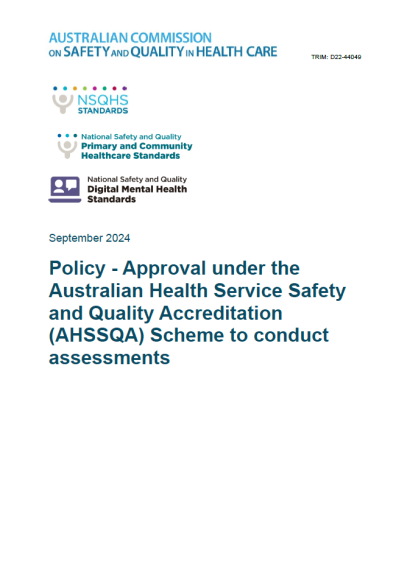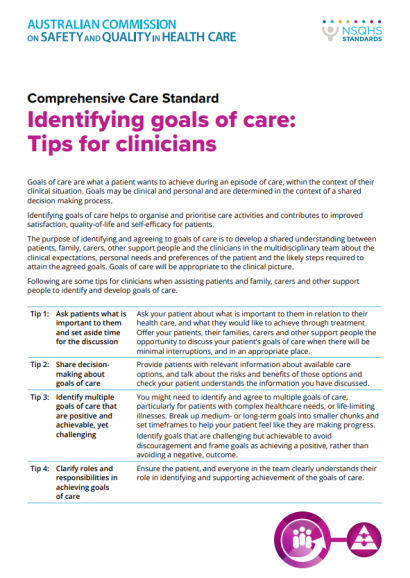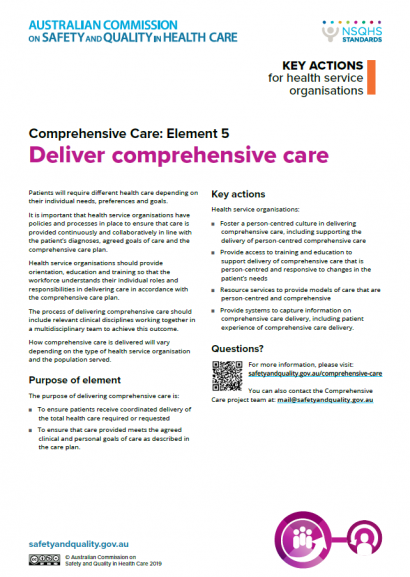We, the Australian Commission on Safety and Quality in Health Care, acknowledge the Traditional Owners and Custodians of the lands on which we work, and pay our respects to Elders past, present and emerging.
Approved accrediting agencies assess health service organisations to the National Safety and Quality Health Service (NSQHS) Standards, Multi-Purpose Services (MPS) Module, and/or the National Clinical Trials Governance Framework. These agencies are approved by the Australian Commission on Safety and Quality in Health Care (the Commission) following application and review by an approval panel.
All public and private hospitals, day procedure services and public dental practices are required to be accredited to the National Safety and Quality Health Service (NSQHS) Standards.
Many other healthcare facilities will also choose to be accredited in order to improve the safety and quality of health care provision. Assessment to the NSQHS Standards second edition commenced in January 2019.
This course aims to provide an overview of the National Safety and Quality Health Service (NSQHS) Standards for assessors and health service organisations' workforce. It is self-paced and includes learning material such as case studies, videos and tips for implementing the NSQHS Standards.
The Commission has developed a series of fact sheets for consumers and carers about the NSQHS Standards (second edition) and the accreditation process.
Partnering with Consumers was introduced in the first edition of the NSQHS Standards and has been expanded in the second edition.
Person-centred care is widely recognised as a foundation to safe, high-quality health care. It is care that respects and responds to the preferences, needs and values of patients and consumers.
Immobility, such as that associated with extended bed rest in hospital, can cause pressure injuries. Pressure injuries are a major contributor to the care needs of patients within the health industry, and in the majority of cases, pressure injuries are preventable
Falls are a significant cause of potential harm in health care, and are a national safety and quality priority.
Identifying and managing the risk of harm from falls forms part of the Comprehensive Care Standard.
Reviewing the delivery of comprehensive care is important for ensuring patients are receiving care that meets their clinical and personal needs; that risks are efficiently and effectively identified and mitigated; that the agreed comprehensive care plan is achieving what it aimed to; and that patient goals and expectations are being met.
The delivery of comprehensive care should aim to address the health issues the patient was admitted with, and the risks of harm identified, to achieve the agreed clinical and personal goals of care.




